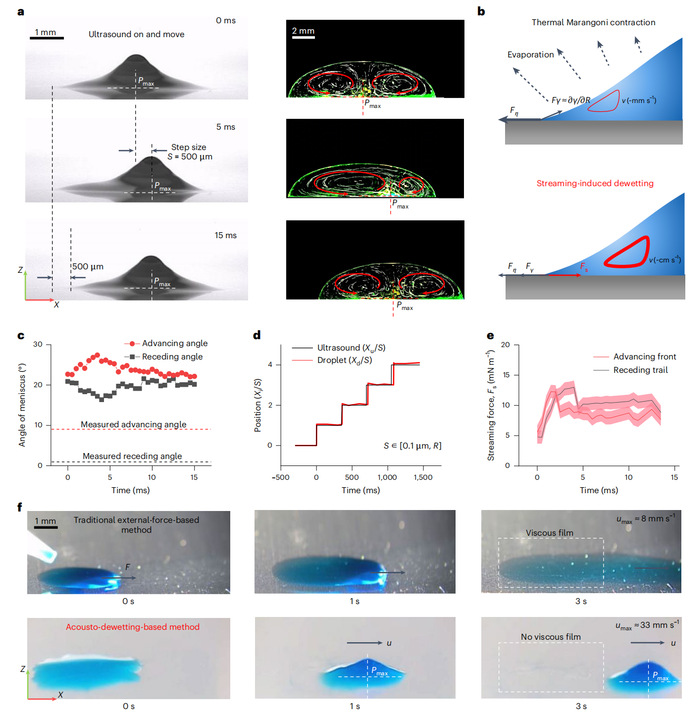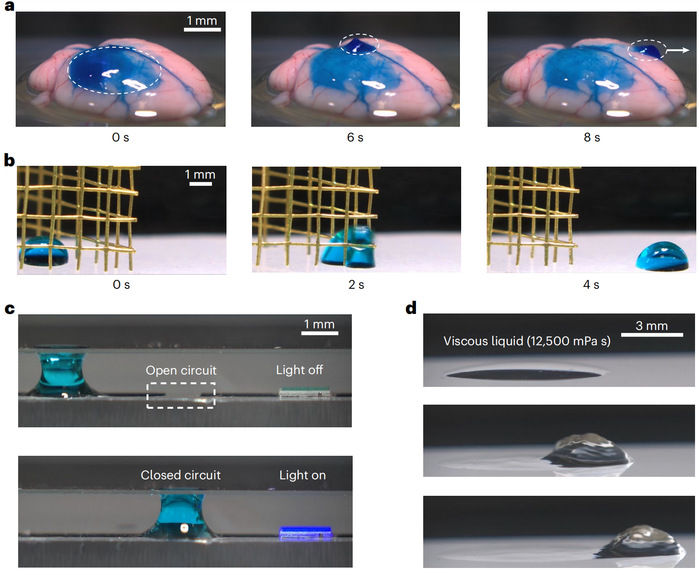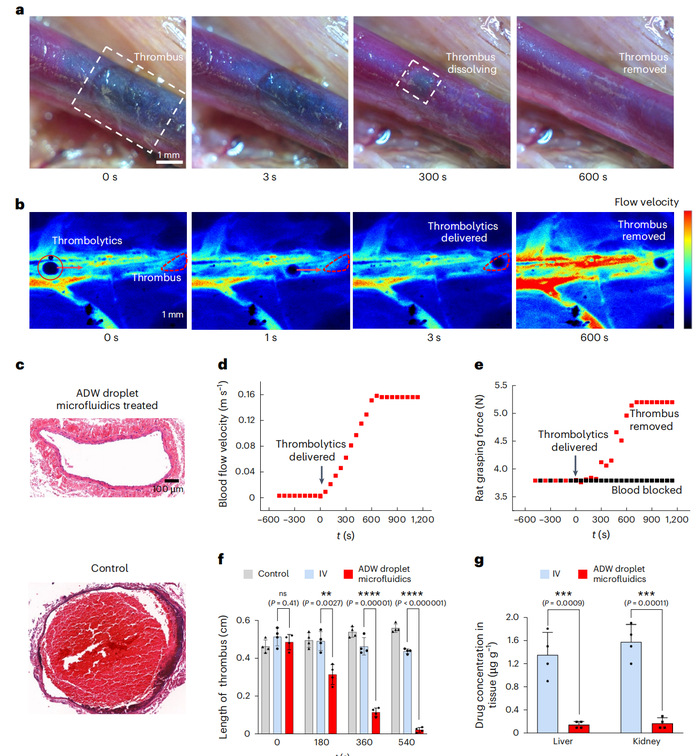A research team led by Assistant Professor Liu Song from the School of Information Science and Technology (SIST) at ShanghaiTech University, in collaboration with Professor Wang Zuankai’s team from The Hong Kong Polytechnic University (PolyU), has developed an innovative droplet manipulation technique called “acousto-dewetting.” This advancement overcomes the traditional reliance on specific surfaces, enabling flexible movement of droplets on highly water-absorbent superhydrophilic surfaces and any other surfaces. The advance paves the way for new applications in medicine, chemistry, and materials science. The findings, titled “Acousto-dewetting enables droplet microfluidics on superhydrophilic surfaces,” were published in Nature Physics.
Droplet microfluidics, a technique for manipulating tiny droplets (from microliters to nanoliters), is vital for applications like disease diagnostics, drug development, and material synthesis. However, conventional methods rely on hydrophobic surfaces (similar to water-repellent coatings) to drive droplet movement. These surfaces often fail in wet biological environments, such as inside the body, making droplet control challenging. Achieving efficient droplet manipulation on superhydrophilic surfaces, which absorb water like a sponge, has long been a major scientific hurdle.

Dynamic relationship between acoustic streaming and droplet motion.
The “acousto-dewetting” technique—which uses sound waves to release droplets from surfaces where they spread tightly due to high water absorption—addresses this challenge. In simple terms, the team employs a sophisticated ultrasonic device to emit focused sound waves, creating powerful “acoustic streaming” (like water currents pushing a boat) inside the droplet. This alters the droplet’s internal pressure, allowing it to glide swiftly on superhydrophilic surfaces and any surface as if guided by an invisible hand. Unlike traditional methods, this approach requires no special surface treatments or chemical additives, significantly boosting manipulation efficiency.
Experiments show that acousto-dewetting achieves droplet movement speeds of up to 33 mm/s, far surpassing the typical speeds of conventional microfluidic techniques on superhydrophilic surfaces (usually 0.1-0.3 mm/s). This high speed prevents the formation of viscous films (thin liquid residues left behind), resolving a long-standing barrier in superhydrophilic surface manipulation. The team developed an ultrasonic array system with 2,500 electrodes to precisely control sound waves, generating a high-energy acoustic field for flexible droplet movement. They successfully applied this technique on living tissue surfaces, demonstrating safe and efficient clinical potential.

Generality of the acousto-dewetting effect across different surfaces and liquid properties.
This technology greatly expands the applications of droplet microfluidics. In medical diagnostics, it enables rapid clot removal and precise drug delivery, offering new solutions for cardiovascular diseases. The technique also works with high-viscosity liquids and complex environments, showing versatility across various liquids and any surface. Its ability to function without special surface treatments, such as chemical coatings or physical modifications, makes it promising for fields like intelligent soft robotics, green chemical reactions, miniature energy systems, and programmable droplet computing platforms, providing a versatile tool for interdisciplinary innovation.

In vivo microfluidic application scenarios
This research is a collaborative effort between ShanghaiTech and PolyU. Prof. Liu Song and Dr. Sun Pengcheng from PolyU/City University of Hong Kong are the co-first authors, with Prof. Liu Song and Professor Wang Zuankai as the co-corresponding authors. ShanghaiTech is the first affiliation.

